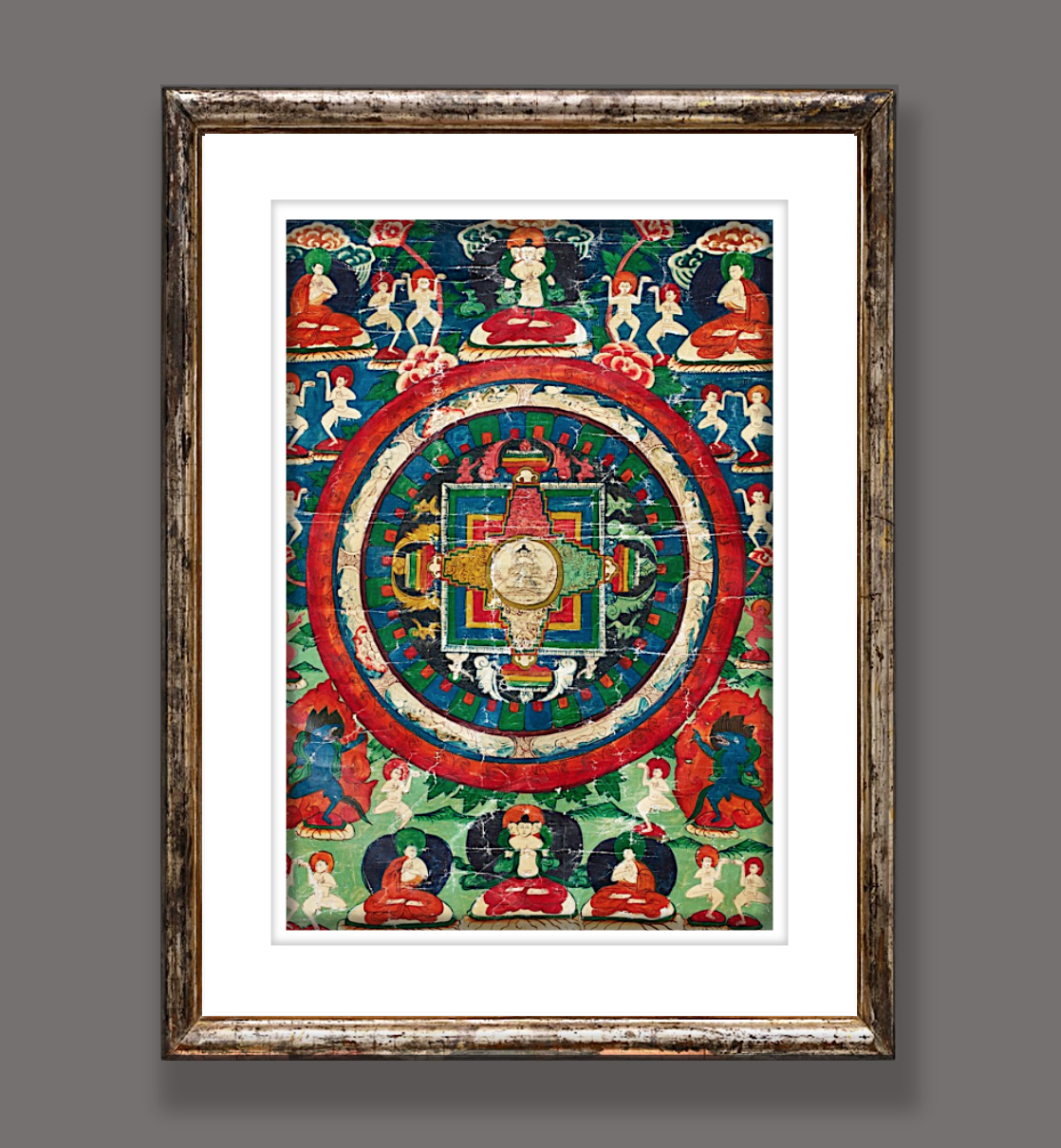

Title: Sino-Tibetan Bodhisattva Avalokiteshvara Thangka Religious Painting
Shipping: $29.00
Artist: N/A
Period: 19th Century
History: Ancient Art
Origin: Central Asia > China
Condition: N/A
Item Date: N/A
Item ID: 476
Sino-Tibetan Bodhisattva Avalokiteshvara Thangka 15 ½" x 11" original image Of rectangular form silk Thangka, the central hand-painted image was stitched with several textile and silk borders, with a rod and a string for hanging at the top; depicting a central mandala with Bodhisattva Avalokiteshvara, surrounded by multiple figural groups in the sky and on earth in various postures, dark blue background on the upper half, grass green background on the lower half. Red wax seal and Tibetan stamp on the verso of the painting; later borders canvas stamped with additional info on the back lower right, overall 31-½" x 20 ¾". Thangkas were often unrolled and pinned up in a smoky and damp environment in temples, shrines, and homes, or carried in festivals causing the typical loss of pigments, creasing, and soil. Natural mineral pigments and canvas prepared with Yak-hide glue were typical. Condition: As is, wear consistent with age and use. It comes unframed.
The handpainted Sino-Tibetan Bodhisattva Avalokiteshvara Thangka has a rich history that is deeply intertwined with the religious and cultural heritage of Tibet, China, and the broader Himalayan region. Thangka paintings are a unique form of Buddhist art that originated in Tibet and are highly regarded as sacred objects of devotion and meditation. The history of the handpainted Sino-Tibetan Bodhisattva Avalokiteshvara Thangka can be traced back to the origins of Buddhism in Tibet. Avalokiteshvara, also known as Chenrezig in Tibetan Buddhism, is a bodhisattva associated with compassion and is considered one of the most revered deities in Tibetan Buddhism. Thangkas depicting Avalokiteshvara has been created and used in Tibet as objects of veneration and meditation for centuries. The art of thangka painting is a specialized skill that has been passed down through generations of Tibetan artists. These paintings are traditionally created using mineral pigments, often mixed with gold or silver dust, on cotton or silk canvas. Thangkas are typically painted in a highly detailed and intricate manner, with vibrant colors and intricate iconography, following strict artistic and religious conventions. The Sino-Tibetan style of thangka painting emerged during the Ming and Qing dynasties (14th to 19th centuries) when Tibet was under Chinese influence. During this time, thangka painting in Tibet was influenced by the artistic styles and techniques of China, resulting in a unique blend of Tibetan and Chinese artistic elements. The Sino-Tibetan thangkas often feature a distinctive palette of colors, refined brushwork, and a fusion of Tibetan and Chinese artistic motifs. The handpainted Sino-Tibetan Bodhisattva Avalokiteshvara Thangka is not only an artistic expression but also holds religious value to the owner.